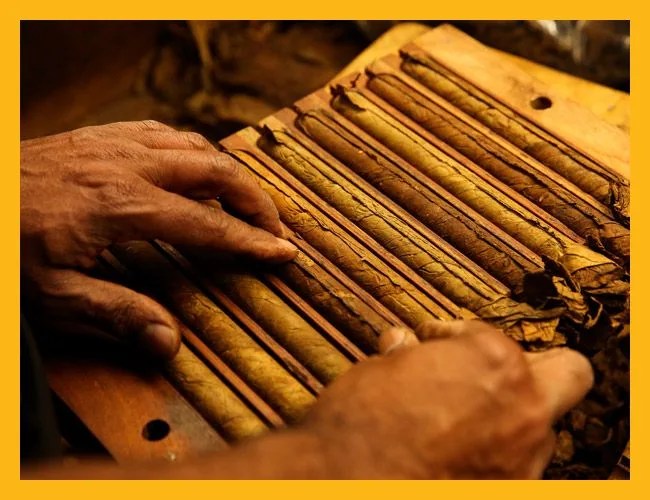In Cuban, Dominican and Honduran cigar factories decades ago, a man — El Lector, or “he who reads” — used to sit in a chair in front of the rows of cigar rollers bent over their desks. His job was to read to the rollers. The newspaper often sufficed, but it could be anything, really. Most rollers could not read, and, as their job was extremely precise, even more repetitious, the reader gave their work a tempo, and more importantly, it passed the time — a gift, as anyone who’s worked a monotonous task can tell you.

Radio killed the reader. At Martinez Cigars, a cubby hole of a place sandwiched between a bodega and a bridal goods store on Manhattan’s bustling, ugly 29th Street, the radio still plays as the rollers mold their tobacco leaves. There is lector here. The three rollers sit at their chairs, bent slightly over their work desks at the back of the shop, 20 feet from the front door, hands moving like they’re on rails, puffing away on cigars they’ve rolled for themselves, each with a paper coffee cup perched an arm’s length away. Scraps of torn tobacco leaves overflow from their desks onto their laps and festoon the floor below like expensive sawdust. Sometimes the rollers are quiet; often they listen to customers talk or whistle along to the radio’s samba beat; but mostly, they banter.
“They need to occupy themselves with something,” says Chris Gomez, a four-year employee of the store. “They have a special bond: he bothers him, he bothers him. That’s how they pass their time. Talkin’ — ‘What are your kids doing’, ‘how are your kids doing in school’.”
“Not a lot of people are doing it like this any more. When you put your hands on it, you’re actually doing it, there’s your face in the cigar.”
Martinez Cigars has been around 41 years. It’s one of the only New York chinchales, small stores where cigars are still rolled by hand, in house. Today, in New York City and elsewhere, it’s far more common for stores to sell big brands from the Caribbean, like Cohiba, Punch, Ashton and Alec Bradley, or to have their own blends rolled for them off site. Martinez is packed every weekday afternoon, and its in-house rolling is a big part of that; Gomez says the sight of the rollers at work stops passersby in their tracks every day. But these men aren’t just an attraction. They’re the beating heart of a thriving shop. Bared for all to see, they bring smokers that much closer to their beloved cigars. And, whether you love smoking cigars or not, to watch them work is to experience rote task transformed into artistry.
“It’s very important because it’s a lost art,” says Gomez. “Not a lot of people are doing it like this any more. When you put your hands on it, you’re actually doing it, there’s your face in the cigar.”

